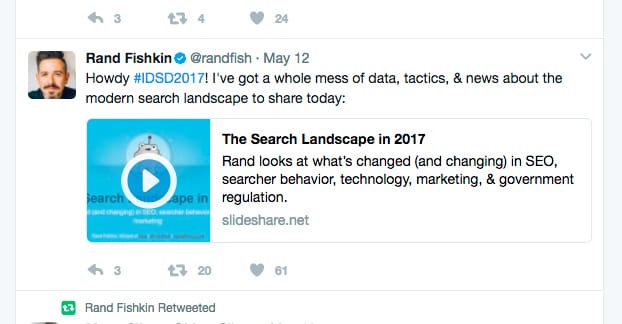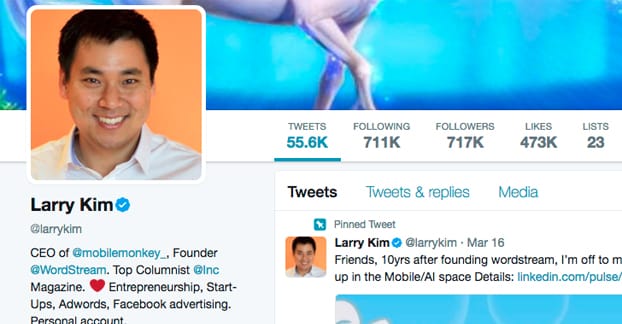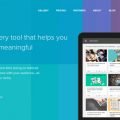We often talk about running a Twitter account, and how you need to keep your feed alive with a lot of content. We also mention a lot how you can’t just post your own content constantly; it’s always a good idea to retweet stuff to fill in slots. If you have three blog posts per week and tweet each of them twice, that’s still only six slots. If you’re aiming for 3-5 tweets per day, that’s a lot of extra space to fill.
Retweeting is the best way to curate content your users might find useful. You don’t have to go all William Gibson and retweet a thousand different things every day (seriously, the guy is a machine, he retweeted 66 different posts in the 11 hours since his last actual post as of this writing*), but you should at least strive to retweet a few posts per day.
This blog post is aimed at helping you figure out what, when, and why you should retweet content. Where do you find good content to retweet? When should you retweet content? What kind of retweet should you use? Let’s investigate.
Finding Content to Retweet
The first thing you need to do is find content to retweet. The better the content, the more engagement you’ll get. You have two goals with retweeting content, by the way:
- Build engagement with your brand via sharing industry relevant knowledge.
- Become an authority source of content people can follow to stay up to date.
The first one is going to happen regardless. As long as you have an audience, and as long as you’re sharing content, people are going to engage with that content. It’s the second one that takes time to establish, but it’s one of the best things you can do.
The goal is to become a single source people can watch to get all of their news and awareness, rather than having to watch a variety of different sources themselves. I make fun of William Gibson up above, but it’s a good idea to follow him if you’re interesting in politics from a liberal slant, because he’s great at covering a wide variety of issues. You won’t be going quite as overkill, but you’ll be retweeting a lot, and adding your own content in when you have content to share.
Once you become an industry news source, or at least a good source of what’s going on, you’ll grow like wildfire. Too many brands are too self-promotional for this kind of growth. They try to become industry authorities by covering all of those topics on their blog. This creates an implicit bias, and makes people less likely to trust everything because it’s all coming from one source. By sharing content from different sources via retweet, you’re saying “come here to see what’s going on, from their own lips.”
So where do you find content to retweet? Here are various sources you can try. I recommend getting a bunch of each of them. You’re looking for only the best from each source for each given day, not everything from every source, so you have plenty of leeway. The more sources you have, the more possible good content you have to share.
Industry Hashtags. I recommend setting up a bunch of hashtag monitors and searches. Come up with a list of the most common and most useful hashtags being used throughout your industry. Ignore the most branded tags, no one needs to really pay attention to Coke’s advertising campaigns, but pay attention to general tags like #SEO or #Marketing or what have you. Additionally, keep an eye on new tags that pop up from time to time. Seasonal tags like social media events or marketing summits or whatever will have a lot of good content for a month or two, and then die down for the rest of the year. It’s a good idea to keep on top of them.
I can’t give you a lot of specific hashtag examples due to the variance in industry, but you should be able to identify them based on your own experience and research. You should also keep an eye on the tags other industry influencers are using; if it’s a common and active tag, start monitoring it yourself. As for how you monitor those tags, check out this post.
Industry Blogs. This one might seem a little counter-intuitive. After all, if you want to find content to retweet, shouldn’t you find it on Twitter? Well, yes, but you can count on most of the best industry blogs to be tweeting their content.
The process is pretty simple. View the blogs, or at least their RSS feeds, and look for the best content published that day or that week, depending on the volume produced by that blog. When you find the content, look at it for two things. First, look for “click to tweet” plugin implementation. This makes it easy to tweet the post without needing to look up a specific tweet. If you can’t find such an implementation, look for the Twitter account of the site itself, or of the author writing the content for that site. Then look for a recent tweet with that content shared, which you can then retweet.
Yes, I know it’s not a simple process, and it isn’t always easy to pull off, particularly on the more fast-moving accounts. Still, it can get you some good content that hasn’t gone viral or circulated in your industry circles yet, and being on the forefront of content circulation is your primary goal.
Influencer Accounts. You want to find the main accounts of anyone in your industry who is likely to be tweeting good value. Look for site accounts and author accounts, as well as other aggregator accounts. This will give you an idea of what’s moving in your industry, what is languishing, and what is new and fresh.
In order to help keep track of this, I recommend building Twitter Lists. By adding these accounts to lists, you can view all of their content in a customized feed, without needing to follow them all yourself, or parse your own feed. I do recommend following them yourself as well, in an effort to get a follow in return, but it can be helpful to have that separate feed. This is particularly true if you’re following a lot of accounts, which clutters up your feed and makes it hard to parse.
Monitor Trends. There will be a lot of trends on your sidebar, and they will change throughout each day. Some of them will be relevant to your industry, some of them will be relevant to your location, and some of them will be global trends. A few will even be paid trends. You should keep an eye on all of these and filter them for anything that could be relevant to share. Often times you will see these trends developing through the volume and usage of certain hashtags, and you will be able to hop on the bandwagon early, but if you miss one this is the place to find it.
It’s generally a good idea to participate in trends without actually retweeting, or while also retweeting. The fact that they’re trending means people already know about it, so you aren’t gaining as much benefit through simple retweets, but content-original tweets will do well.
Monitor News. Industry news aggregators will be a great source of information, both in terms of long-form reporting and up-coming stories. This is how you will eventually be able to predict what will trend and what brands to focus on with your retweets. Keep a close eye on the news and stay ahead of the curve.
You can also look at broader news. Keep an eye on tech developments and geopolitical news, and keep in mind how it can affect your industry. For example, if you’re in a tech industry, it might not mean much to read about a tsunami, but if that tsunami disrupts factories and shipping lines, it might mean hardware prices rise, which would be newsworthy. The same could go for regulations in China, political tensions in Korea, and other sorts of news. Keep your critical thinking hat on and monitor news sources to adapt with your own analysis.
Finding the Right Times to Retweet
Retweeting content is, in most cases, filler. That’s how you’re going to use it, unless you want to become a primary aggregator and put your brand aside. Since you’re likely trying to grow your brand first, you want the best time slots to be filled with your primary content, not your retweets.
As for picking when you actually publish tweets, keep in mind timing best practices. You’ll need to figure out the best, most active times for your audience and use those as your timing for your primary content. Then fill in the hours around then, when your users are active but not at peak, with your retweets. This way there’s always something to see, but the largest share of people see your most important content first.
Choosing a Manual, Automatic, or Unofficial Retweet
There are three forms of retweeting, though most people only recognize two. Each of them have their pros and cons, and I recommend using all of them in a mix.
First is the automatic retweet. This is what happens when you click “retweet” on a tweet. The tweet, complete with its hashtags, primary source, and original engagement information will appear in full on your Twitter feed. The only addition is “<you> retweeted” above it.
These are the most commonly accepted form of retweet and they get the most attention from the source, but they have one huge drawback; any engagement the tweet gets goes to the original poster, not to you.
You can add commentary, which will appear more like a reply than a retweet in your feed, and this can be useful, but don’t try to shoehorn your commentary into every tweet. Only do it when you have something important to add.
The second kind of retweet is the older, classic retweet, or the manual retweet. This is where you copy and paste the content of the tweet, in quotes, with “RT:” in front of it. You also typically add some commentary of your own, as well as a @username tag of the original poster to indicate that you did a manual retweet that they might want to be aware of.
This is beneficial in that the engagement you get on the tweet is yours, but you also lose out on commentary. If the original post used up 80 out of the 140 characters available, it means you only have 60 to write your own commentary.
The third kind of retweet is the unofficial retweet, and I kind of mentioned it above. This is when you find content and tweet it manually, even if there’s a tweet you could have retweeted instead. The “click to tweet” format does this; you’re making your own tweet with the pregenerated content, so there will be a lot of copies of that tweet with different primary sources. This method has the benefit of looking like a normal tweet, rather than a retweet, and you get full control over commentary, and engagement. The downside is that there will be plenty of copies of it around, so yours doesn’t stand out.
The decision of which kind of retweet to use (and when to use it) comes down to your goals with the tweet. Is it one you think you will get engagement on, or that people might follow you because you posted? If so, do a manual retweet. The same goes for cases where you think the original source might like, share, or follow you because you shared it. Otherwise, do an automatic retweet. Unofficial retweets are good to mix in occasionally, but should be kept as a rarity, or you might be accused of trying to poach engagement.
*Since I started writing this post, he has retweeted 6 more posts. Right?








